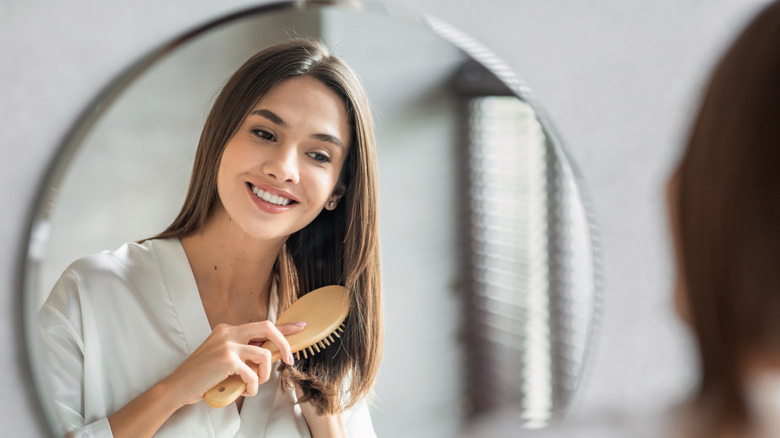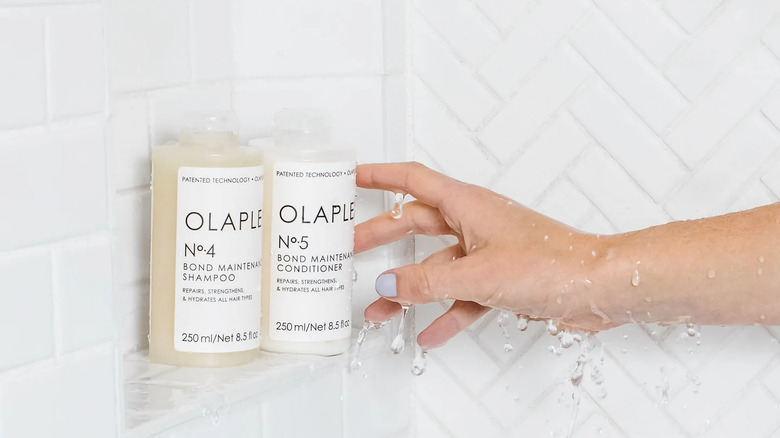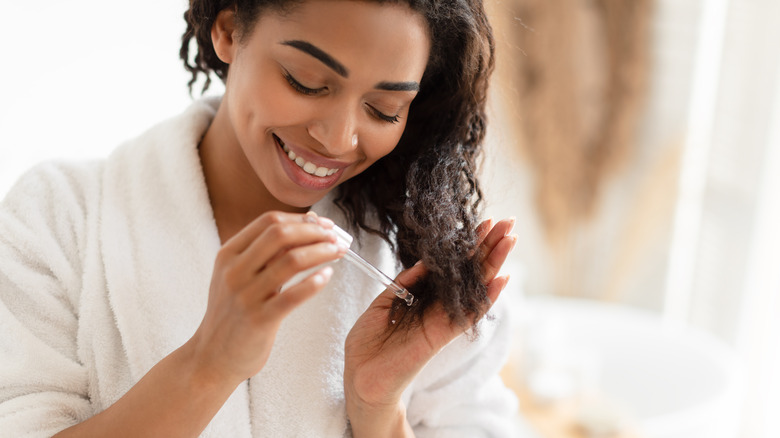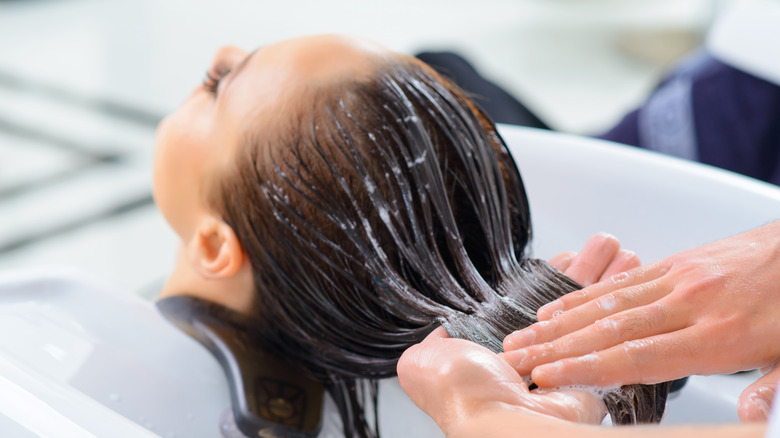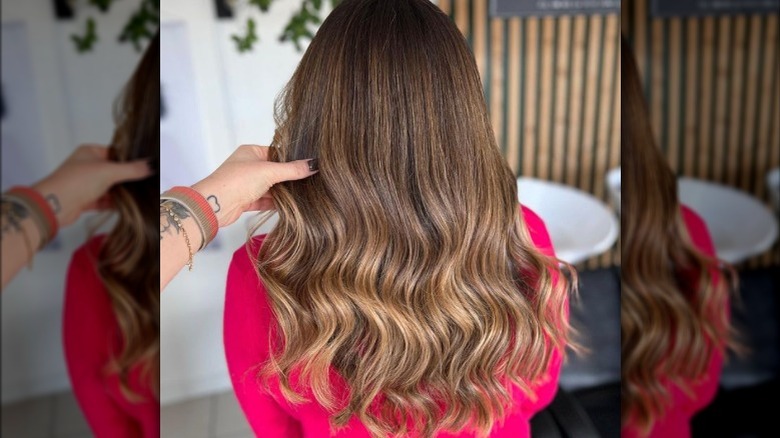Yes, You Should Maintain Your Salon Bond Treatment At Home. Here's How
Getting your hair done can be a long process that has you sitting in a salon chair for a few hours, but the final result always makes it worth the wait. Whether you're touching up your highlights or making a significant change, the maintenance after getting your hair done can be hard to keep up with. If you're unsure how to keep up with your fresh 'do, there are some things to know before buying the first products you see.
Drying or bleaching your hair damages the natural hair due to the chemicals used. To keep your hair healthy and strong post-hair appointment, finding products with amino acids will work the best to repair and strengthen your hair. Amino acids are the building blocks of proteins, and when they're used in bond treatments, like shampoos, conditioners, and hair masks, they can repair every part of the hair.
Hair bond treatments have become more popular over the last few years. They used to be something you would get at the hair salon, but now brands have created their own at-home bond treatments. Since a number of options are available, it's important to research to get the best products for your hair. Here's how you can maintain your salon bond treatment at home.
Use the right products
We mentioned how finding hair products with amino acids is vital to your hair's health. You want to prevent buying expensive bond treatments that don't have any benefits and will act like any regular shampoo or conditioner. The easiest way to find the right products for your hair is by asking your hair colorist since they know your hair the best. However, they might recommend that you purchase their salon products, which could be more expensive since they often have partnerships with brands.
The most popular bond treatment brand you might've seen is Olaplex. Hair specialists and stylists recommend it since it can be used on any hair type. Olaplex has shampoos, conditioners, hair masks, oils, and styling treatments that can help repair and strengthen your hair regardless of whether you've dyed it. But, of course, there are other brands you can invest in and try out if you feel that Olaplex is too expensive or doesn't work how you want it to; always do your research on new products to ensure they have the right ingredients.
How the products will help your hair
Since various products help repair and strengthen the hair, you don't necessarily have to use them all. Shampoo and conditioner work to improve breakage, hydrate the hair and make it feel softer with regular use. If you decide to use hair bond shampoos or conditioners, it's crucial to leave it in for a few minutes before rinsing it off to ensure it works. Another treatment you can use is a bonding mask that you should apply after your shower. The leave-in conditioner will continue the repairing process, and it'll also help reduce frizz and flyaways. In addition, leave-in conditioners can protect the hair from heat when you use hot tools. If you prefer a leave-in styling product, a bond serum adds shine to the hair while protecting it from the sun and pollution.
A great way to lock in moisture and shine is through a bond oil. It's usually applied before using heat products to protect it from heat and after to reduce frizz. When you repeatedly dye your hair, using hair bond products will prevent color damage and keep it smooth and strong. If you decide to use bond products, think about what issues your hair currently has to make the best decisions. Start with shampoo and conditioner, and if you don't notice any improvement, add a leave-in or a serum to help the process.
Which products should you use for your hair?
After getting familiar with the available products, it's time to figure out which ones you should use for your hair. Everyone has different hair types, so finding the best products for your type is essential. Trying out some other products the first time can take some time. For example, if you have never dyed your hair but use hot tools, incorporating a bond oil can help protect your hair and shampoo and conditioner. For dry or frizzy hair, using shampoo, conditioner, and a leave-in conditioner or hair mask will benefit your hair by hydrating it and eliminating frizz. Typically, you can use a hair mask twice a week and a leave-in conditioner after every hair wash, but you can increase the use if your hair needs extra hydration.
If your hair is extremely damaged from dyeing it or using hot tools, you'll want to use every bonding treatment to ensure it gets the hydration, protection, and security your hair needs. Once you see progress in your hair's volume and texture, you can reduce the use of some products, like hair masks. On the other hand, if you solely dye your hair, bonding color additives will help maintain your hair's color. In addition, using bonding shampoo and conditioner on treated hair will give it strength and repair any breakage.
How long does it take for bond treatments to work?
Hair bond treatments can work fairly quickly after one use, but depending on how fragile your hair is, it could take some time for it to get stronger. As long as you keep up with the treatments, you'll notice healthier hair, at least after the third time using your products. Throughout your bond treatment, you'll also notice your hair become less frizzy and, instead, see it's easily manageable and shinier. If you don't notice a change, switch to a different brand. Many hair care brands specialize in bond treatments, so one is bound to work for your hair.
To give your hair an extra boost, taking biotin supplements daily can make your hair grow stronger and shinier. Biotin stimulates keratin production, which causes hair follicles to grow and even increase the speed of growth. However, for some reason, it can be hard to remember to take vitamins. So, if you're likely to forget to continue taking said supplements after a week, it might be best to curate a fun hair routine that will give you a chance to use your bond treatments.
